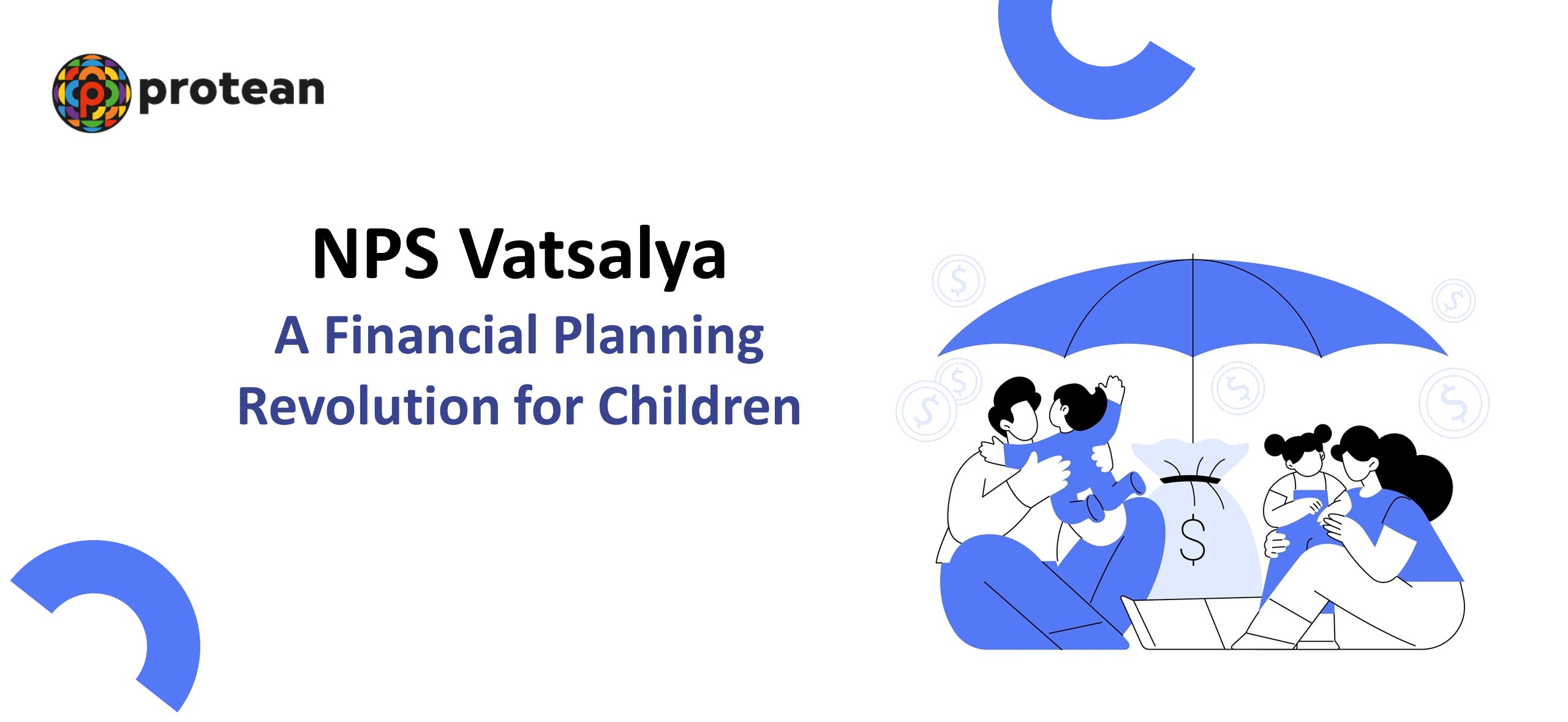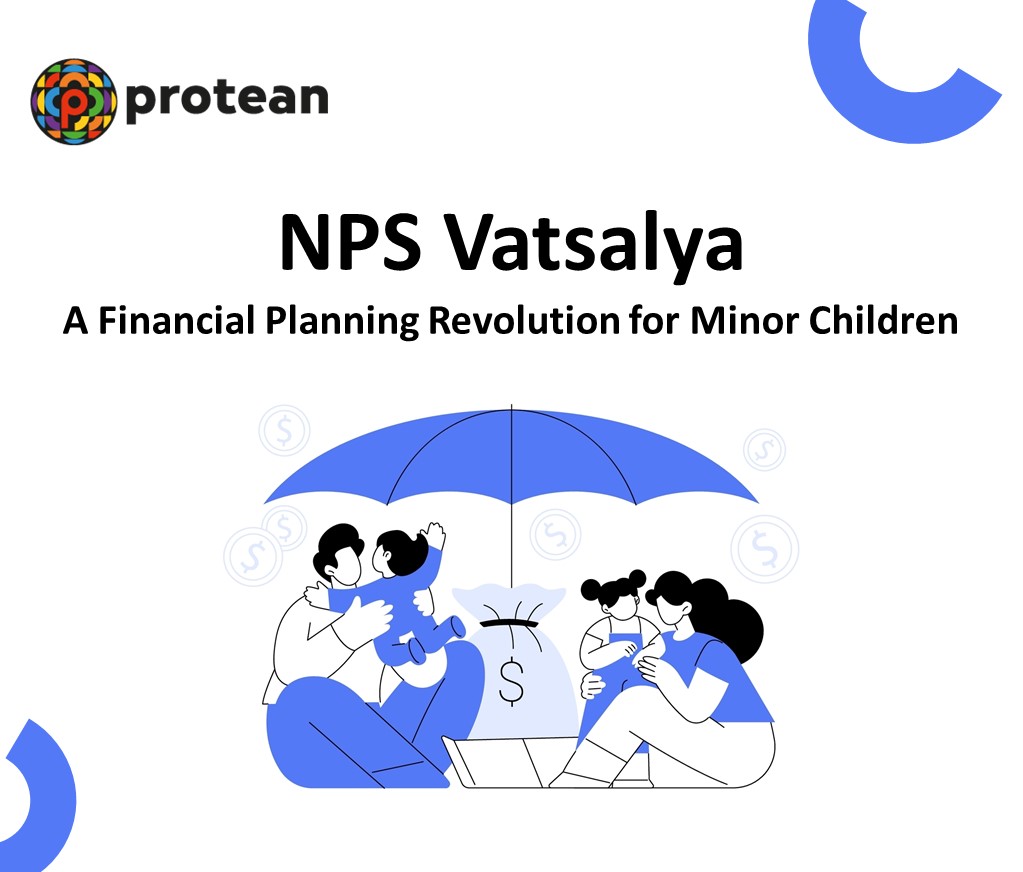As parents, one of the most significant responsibilities is securing our children's future. From providing essential education to ensuring their health and well-being, planning plays a crucial role. But what about their financial future? Enter NPS Vatsalya, a groundbreaking initiative designed to instill financial responsibility and security in the lives of our minor children.
What is NPS Vatsalya?
Unveiled in the Union Budget 2024-25 and launched on September 18th, 2024, NPS Vatsalya isn't just another savings scheme; it's a meticulously crafted financial roadmap for your child's future. This scheme, regulated and administered by the Pension Fund Regulatory and Development Authority of India (PFRDA), aims to empower children by nurturing the habit of saving and investing early on.
Why NPS Vatsalya Stands Out
Imagine explaining complex financial concepts like pensions and retirement to a child. Daunting, right? NPS Vatsalya bridges this gap, making financial planning a family affair.
Here’s why NPS Vatsalya should be on every parent’s radar:
- Long-Term Financial Security: Unlike traditional savings plans that offer limited returns, NPS Vatsalya allows your child to benefit from the magic of compounding. The longer the investment horizon, the more potential there is for significant growth, ensuring a substantial corpus for your child's future. Click here to take charge of your NPS Savings.
- Low Entry Barrier, High Impact: You don't need to be a financial wizard to give your child a head start. With a minimum contribution of just Rs. 1000 per year, NPS Vatsalya makes financial planning accessible to all.
- Instilling Financial Responsibility: NPS Vatsalya instills crucial financial values from a young age. It teaches children the power of saving, investing, and planning for a secure future, setting them on a path to lifelong financial well-being.
- Protection Against Uncertainty: Life is full of unforeseen events. NPS Vatsalya acts as a financial buffer, offering a safety net during times of need, such as higher education or medical emergencies.
- Flexible and Adaptable: NPS Vatsalya grows with your child. It offers flexibility in investment choices, allowing you to adjust the portfolio based on your child’s risk appetite and financial goals as they mature. Click here to explore Your NPS Options.
Understanding the Nuts and Bolts of NPS Vatsalya
Eligibility:
Open to all Indian citizens below 18 years of age.
Account opened and operated by the parent/legal guardian until the child turns 18.
Account Operations:
Account is opened in the minor's name with the parent/guardian as the operator.
A unique Permanent Retirement Account Number (PRAN) is issued.
The minor becomes the sole beneficiary of the account.
Opening an NPS Vatsalya Account: A Step-by-Step Guide
Opening an NPS Vatsalya account is hassle-free and can be done through various channels:
Online
- eNPS platform: Secure your child's future with NPS Vatsalya. Register easily on the Protean website. Open an account now!
- Internet Banking: Most major banks in India offer NPS Vatsalya account opening facilities through their internet banking portals. Look for the 'NPS Vatsalya' or 'Government Schemes' section.
Offline:
- Points of Presence (POPs): Visit any registered Point of Presence (POP) like major banks, India Post offices, or Pension Funds. You can locate your nearest POP on the PFRDA website.
- Retirement Advisors/Pension Agents: Seek assistance from authorized financial advisors or pension agents for guidance and account opening support.
Documents Required:
For the Minor:
- Proof of Date of Birth (Birth Certificate, School Leaving Certificate, Matriculation Certificate, Passport, PAN).
- For the Guardian (Parent/Legal Guardian): Know Your Customer (KYC) documents for identity and address proof (Aadhaar Card, Driving License, Passport, Voter ID Card, NREGA Job Card).
Additional Documents:
In case of a court-appointed legal guardian, a copy of the court order is required.
NRIs/OCIs may need to provide additional documentation as specified by PFRDA.
Making Contributions:
Once the account is active, contributing to your child's NPS Vatsalya account is designed for convenience:
Online:
Direct debit from your bank account linked to the NPS Vatsalya account.
Net banking through your registered bank account.
Debit card, credit card, or UPI payment gateways.
Offline:
Cash or cheque deposit at any registered POP.
Investment Choices: Empowering Your Child's Financial Journey
NPS Vatsalya understands that one size doesn’t fit all when it comes to investments. It provides flexibility and control over how your child's savings are invested:
Auto Choice (Life Cycle Funds): This option automatically adjusts the investment portfolio based on your child's age. As your child grows, the portfolio gradually shifts from high-risk, high-return investments to more conservative options, ensuring a balance between growth and security. You can choose from:
- Aggressive (LC75): Higher allocation to equities (75%) for potentially higher returns but also higher risk. This option is suitable for long-term goals and a higher risk appetite.
- Moderate (LC50): A balanced approach with a 50% allocation to equities, suitable for moderate risk-takers.
- Conservative (LC25): Lower risk with a 25% allocation to equities and higher allocation to debt instruments. This option is best suited for risk-averse investors seeking capital preservation.
Active Choice: If you prefer a more hands-on approach, you can actively manage your child's portfolio by deciding the allocation across different asset classes:
Equity (E): Investment in shares of publicly listed companies, offering potential for high returns but also carrying higher risk. Maximum allocation allowed: 75%.
Corporate Bonds (C): Investments in debt securities issued by companies, offering moderate returns with relatively lower risk. Maximum allocation allowed: 100%.
Government Securities (G): Investments in debt instruments issued by the Government of India, considered to be the safest investment option with stable but relatively lower returns. Maximum allocation allowed: 100%.
Alternative Assets (A): Investments in assets other than traditional equity and debt, such as real estate or commodities. These investments carry their own risk profiles and potential returns. Maximum allocation allowed: 5%.
Withdrawal Options:
Partial Withdrawals: Life throws curveballs; NPS Vatsalya understands. You can make partial withdrawals for specific needs:
Education: Funding your child's higher education or vocational courses.
Medical Emergencies: Covering medical expenses for your child's treatment of specified illnesses.
Disability: Providing financial support in case of your child's disability (over 75%).
Withdrawal Limit: Up to 25% of the contributed amount (excluding returns) can be withdrawn after a lock-in period of 3 years.
Maximum Withdrawals: A maximum of three partial withdrawals are allowed until your child reaches 18 years.
Maturity (Attaining 18 years): Seamless Transition: The NPS Vatsalya account automatically transitions into a regular NPS Tier-1 account under the All Citizen Model. Click here to access Your NPS Dashboard.
Fresh KYC: The child, now an adult, needs to complete fresh KYC formalities within three months of turning 18.
Continued Contributions: Contributions can continue after fresh KYC completion.
Exit Options:
Corpus above Rs. 2.5 lakhs: 80% of the corpus must be used to purchase an annuity (regular pension income), with the remaining 20% available as a lump sum withdrawal.
Corpus up to Rs. 2.5 lakhs: The entire corpus can be withdrawn as a lump sum.
Unforeseen Circumstances:
Death of the Minor: In the unfortunate event of the child’s demise, the entire accumulated corpus is paid to the registered guardian.
Death of the Guardian: If the registered guardian passes away, another guardian can be registered by submitting the required KYC documents.
Death of Both Parents: A legally appointed guardian can continue the NPS Vatsalya account, with or without making contributions. The child will have the option to exit the scheme upon turning 18.
Addressing Your Concerns
Let’s address some common questions:
Is a bank account mandatory for the minor? While not mandatory at the time of account opening for Indian residents, it becomes essential during partial withdrawal or exit before the child turns 18. NRIs/OCIs are required to provide NRE/NRO account details.
What if I miss the minimum contribution? Missing the minimum contribution will freeze the account. It can be reactivated by resuming contributions. The account will be closed only upon the subscriber's formal request.
What about account access and grievance redressal? You can access your child's NPS Vatsalya account online through the CRA's web portal or mobile app. For grievances, you can use the Central Grievance Management System (CGMS) available on the NPS website.
Empowering Your Child's Future with NPS Vatsalya
NPS Vatsalya is more than just a savings scheme; it's a powerful tool to build a secure and prosperous future for your child. It's a simple yet effective way to introduce children to the world of finance, cultivate responsible financial habits, and ensure they have the resources to pursue their dreams. With its low entry barrier and flexible investment options, NPS Vatsalya is an investment that keeps on giving, making it an ideal gift for your child's financial future. Remember, the best time to plant a tree was yesterday, but the second-best time is now. Start planning for your child's financial well-being today with NPS Vatsalya!
- Story by Bruhadeeswaran R.

